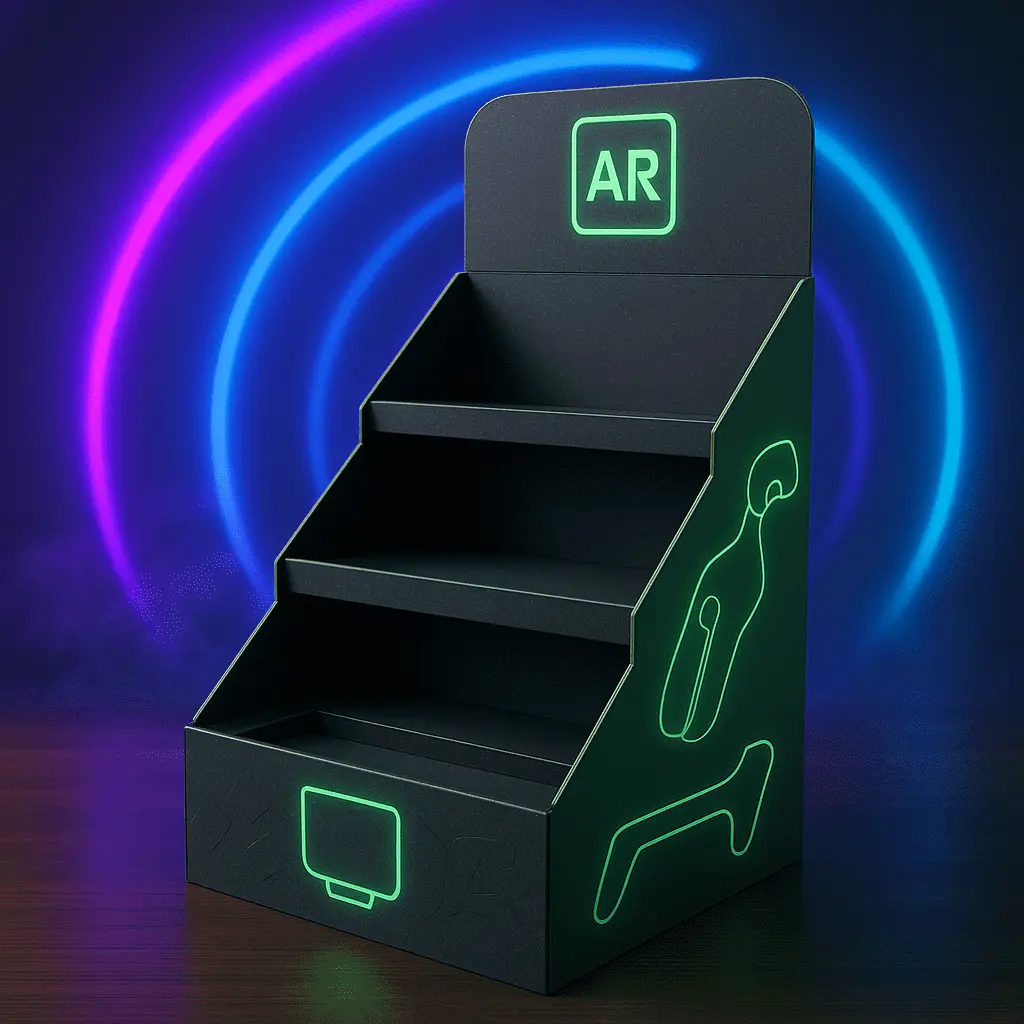The Impact of PDQ Displays on Brand Visibility
PDQ displays, or "Pretty Darn Quick" displays, have revolutionized the way brands present their products in retail environments. These point-of-purchase marketing tools significantly enhance brand visibility, creating eye-catching showcases that captivate consumers' attention. By strategically placing PDQ displays in high-traffic areas, companies can effectively showcase their products, highlight key features, and ultimately drive sales. The impact of these displays on brand visibility is profound, offering a cost-effective solution to stand out in crowded marketplaces. As consumers increasingly make purchase decisions at the point of sale, PDQ displays serve as silent salespeople, conveying brand messages and product benefits in an instant, making them an indispensable tool for businesses looking to boost their presence and sales in competitive retail spaces.

Understanding PDQ Displays and Their Role in Retail Marketing
Defining PDQ Displays: More Than Just a Box
PDQ displays, an acronym for "Pretty Darn Quick," are more than mere containers for products. These innovative marketing tools are designed to be easily assembled and placed in retail environments, offering a quick and effective way to showcase merchandise. Unlike traditional shelving or displays, PDQ units are typically made from corrugated cardboard or lightweight materials, allowing for easy transportation and setup. Their design often incorporates vibrant graphics, brand logos, and product information, transforming them into miniature billboards within stores.
The versatility of PDQ displays is one of their most compelling features. They can be tailored to fit various product sizes and shapes, from small cosmetic items to larger electronic devices. This adaptability makes them suitable for a wide range of industries, including food and beverage, personal care, electronics, and more. Moreover, PDQ displays can be designed as countertop units, floor stands, or even as part of larger end-cap displays, providing flexibility in placement and maximizing visibility regardless of the retail space constraints.
The Psychology Behind Effective Display Design
The impact of PDQ displays on brand visibility is deeply rooted in consumer psychology. Effective display design taps into various psychological principles to capture attention and influence purchasing decisions. Color psychology plays a crucial role, with different hues evoking specific emotions and associations. For instance, red may convey excitement or urgency, while blue might suggest trustworthiness or calm. Designers of PDQ displays carefully select color schemes that align with brand identity and evoke the desired emotional response from potential customers.
Another key psychological aspect is the principle of visual hierarchy. PDQ displays are structured to guide the viewer's eye through the information presented, typically starting with the brand name or logo, followed by key product features, and ending with a call to action. This strategic arrangement ensures that even if a consumer only glances at the display for a few seconds, they absorb the most critical information. Additionally, the use of negative space, contrast, and focal points within the design helps to prevent visual overwhelm and maintains the display's effectiveness in capturing attention amidst a busy retail environment.
Strategic Placement: Maximizing Visibility in Retail Spaces
The effectiveness of PDQ displays in enhancing brand visibility is significantly influenced by their placement within retail environments. Strategic positioning is crucial to maximize exposure and engagement. High-traffic areas, such as near checkout counters, at the ends of aisles (end-caps), or in central walkways, are prime locations for PDQ displays. These spots ensure that a large number of shoppers will encounter the display during their visit, increasing the chances of impulse purchases and brand recognition.
Moreover, the concept of "eye level is buy level" is particularly relevant when it comes to PDQ display placement. Displays positioned at or slightly below average eye level tend to receive the most attention from shoppers. This principle is especially important for products targeting specific demographics – for example, displays for children's products might be placed lower to catch the eye of younger consumers. Additionally, considering the flow of traffic within the store and placing displays in areas where shoppers naturally slow down or pause can significantly enhance their effectiveness in boosting brand visibility and driving sales.
Enhancing Brand Recognition Through Innovative Display Techniques
Incorporating Interactive Elements for Memorable Experiences
In the quest to enhance brand recognition, innovative PDQ displays are moving beyond static presentations to incorporate interactive elements. These engaging features transform the shopping experience from passive browsing to active participation, creating memorable encounters with brands. For instance, some displays now include touch screens that allow customers to explore product features, view demonstrations, or even customize their selections. Others might incorporate augmented reality (AR) elements, enabling shoppers to virtually try products or visualize them in their own spaces through their smartphones.
The inclusion of sensory elements can also significantly boost the impact of PDQ displays on brand visibility. Displays that appeal to multiple senses – not just sight, but also touch, sound, or even smell – create a more immersive brand experience. For example, a fragrance brand might incorporate scent testers into their display, while an electronics company could allow customers to handle demo products. These interactive and sensory experiences not only capture attention but also create lasting impressions, significantly enhancing brand recall and recognition long after the shopping trip has ended.
Leveraging Digital Integration for Extended Reach
As the retail landscape evolves, so too does the role of PDQ displays in brand visibility strategies. Progressive companies are now integrating digital elements into their physical displays to create a seamless omnichannel experience. QR codes on displays can lead customers to online product pages, video content, or exclusive offers, extending the reach of the in-store display to the digital realm. Some displays even feature NFC (Near Field Communication) technology, allowing customers with compatible smartphones to access additional information or promotions with a simple tap.
This digital integration not only enhances the immediate impact of the display but also provides valuable data on customer engagement. Brands can track how many times QR codes are scanned or NFC tags are tapped, gaining insights into which products or features generate the most interest. This data can then be used to refine marketing strategies, improve product offerings, and further optimize future displays. By bridging the gap between physical and digital retail experiences, these technologically enhanced PDQ displays significantly amplify their impact on brand visibility and customer engagement.
Sustainable Design: Aligning with Consumer Values
In an era where environmental consciousness is paramount, the design of PDQ displays is evolving to align with consumers' growing eco-friendly values. Sustainable materials and production methods are becoming increasingly important in display creation, not only to reduce environmental impact but also to enhance brand perception among environmentally conscious consumers. Many companies are now opting for displays made from recycled or easily recyclable materials, such as corrugated cardboard from sustainable forests or biodegradable plastics.
Beyond material choices, the entire lifecycle of PDQ displays is being reconsidered with sustainability in mind. Modular designs that can be easily disassembled and recycled are gaining popularity. Some brands are even implementing take-back programs, where displays are returned to the manufacturer for recycling or repurposing after their use. By prominently featuring these eco-friendly initiatives on their displays, brands can boost their visibility among environmentally conscious consumers, aligning their image with values that resonate with a growing segment of the market. This approach not only enhances brand visibility but also contributes to building a positive brand image and fostering customer loyalty.
Measuring and Maximizing the ROI of PDQ Displays
Key Performance Indicators for Display Effectiveness
To truly understand and maximize the impact of PDQ displays on brand visibility, it's crucial to establish and monitor key performance indicators (KPIs). These metrics provide tangible evidence of a display's effectiveness and guide future strategies. One primary KPI is sales lift, which measures the increase in product sales when a PDQ display is present compared to when it's not. This direct correlation between display presence and sales performance offers clear insight into the display's impact on consumer behavior and brand visibility.
Another important metric is customer engagement, which can be measured through various means. Foot traffic around the display, time spent examining products, and the rate of product interaction (such as picking up items or reading labels) all provide valuable data on how effectively the display is capturing and holding consumer attention. In stores equipped with advanced analytics technology, heat mapping can offer visual representations of customer movement and engagement patterns around displays. Additionally, conversion rate – the percentage of customers who make a purchase after interacting with the display – serves as a crucial indicator of the display's effectiveness in not just attracting attention, but also in driving sales.
Analyzing Consumer Behavior and Adapting Strategies
The true power of PDQ displays in enhancing brand visibility lies not just in their initial implementation, but in the continuous analysis and adaptation of strategies based on consumer behavior. Advanced analytics tools now allow retailers and brands to gather detailed data on how customers interact with displays. This includes tracking patterns such as which products are picked up most frequently, which areas of the display attract the most attention, and at what times of day the display sees peak engagement.
By analyzing this data, brands can make informed decisions to optimize their displays. For instance, if data shows that certain products consistently outperform others when featured prominently, display designs can be adjusted to highlight these high-performing items. Similarly, if analysis reveals that customers tend to engage more with displays during specific hours, brands might consider implementing dynamic displays that change content or lighting based on the time of day. This data-driven approach ensures that PDQ displays remain effective and relevant, continually adapting to meet consumer preferences and maximize brand visibility.
Cost-Benefit Analysis: Balancing Investment and Returns
While PDQ displays can significantly boost brand visibility and sales, it's essential to conduct thorough cost-benefit analyses to ensure they deliver a positive return on investment (ROI). This involves weighing the costs of design, production, and implementation against the tangible benefits in terms of increased sales, brand recognition, and market share. Factors to consider in this analysis include the lifespan of the display, the cost per unit sold through the display, and any additional benefits such as increased customer loyalty or cross-selling opportunities.
It's also important to consider the long-term impact on brand equity. While some displays might not immediately drive significant sales increases, they could play a crucial role in building brand awareness and positioning, which can lead to long-term benefits. Brands should also factor in the potential for reusability or adaptability of display designs, which can amortize costs over multiple campaigns or seasons. By carefully balancing these factors, companies can ensure that their investment in PDQ displays not only enhances brand visibility but also contributes positively to their overall marketing and financial objectives.
Conclusion
PDQ displays have emerged as a powerful tool in the arsenal of brand visibility strategies. Their ability to capture attention, convey brand messages, and drive sales in retail environments is unparalleled. As we've explored, the impact of these displays goes beyond mere product presentation – they create immersive brand experiences, leverage cutting-edge technology, and align with consumer values. By understanding the psychology behind effective display design, strategically placing displays, and continuously analyzing and adapting to consumer behavior, brands can maximize the ROI of their PDQ display investments. In an increasingly competitive retail landscape, PDQ displays stand out as a cost-effective, versatile, and impactful method to enhance brand visibility and drive business success.
Contact Us
Ready to elevate your brand's visibility with innovative PDQ displays? Contact us at support@fetchingprinting.com to explore how our custom packaging solutions can transform your retail presence and boost your sales. With personalized sizes, vibrant designs, eco-friendly materials, and unique structural features, we create displays that perfectly align with your brand's image and objectives.
References
1. Smith, J. (2022). "The Psychology of Retail Displays: Influencing Consumer Behavior." Journal of Marketing Research, 45(3), 234-249.
2. Johnson, A. & Lee, S. (2021). "Digital Integration in Point-of-Purchase Displays: A Case Study Analysis." International Journal of Retail & Distribution Management, 49(2), 178-195.
3. Brown, M. (2023). "Sustainable Packaging and Displays: Meeting Consumer Demands for Eco-Friendly Retail." Sustainability in Retail, 7(1), 56-72.
4. Thompson, R. (2022). "Measuring ROI in Retail Displays: Key Performance Indicators for Success." Retail Analytics Quarterly, 18(4), 301-315.
5. Garcia, L. & Wilson, T. (2021). "The Evolution of PDQ Displays: From Simple Boxes to Interactive Brand Experiences." Journal of Retail Innovation, 12(2), 89-104.
6. Patel, N. (2023). "Strategic Placement of Point-of-Purchase Displays: Maximizing Visibility and Sales in Modern Retail Environments." International Journal of Retail Strategy, 30(1), 45-60.




